ALMANAC (EXTRACT)
ALFRED JARRY (1873-1907)
–
Laval, Tuesday 12 November 2019 – Mercury, passage of the sun. Full Moon . Laval, Wednesday 13 November 2019 – 43-45 Rue Val de Mayenne (Interior)
–
Laval, Tuesday 10 As E.P. 147 St Abstrait, bourreau
Laval, Wednesday 11 As E.P. 147 St Ossian, barde postiche
–
Suddenly, I appeared in Paris, jumped into a rented Mercury speeding off towards Laval – located 280 kilometres west of the Brittany border. I was making a trip in honour of Alfred Jarry.
I was immediately seated at a table in the place chosen for the night – Manoir de Rouessé. The table identified the guest or visitor by a brownish black bronze bird on a square stone pedestal. The bird was balanced on a leg that tilted it excessively backwards, as if it was going to fall off the pedestal on which it stood. The other tables also had something that made them significant.
The host served me food and wine in abundance, hurrying back inside to light the fireplace. Later I sipped brandy by the fire and looked at a model of the place where I was staying. It was a desolate, 15th century house, with a moat to protect and bend in its reflection as it could be seen from the back of the ha-ha in the garden. It had some ubuesque qualities for a Phalanstery.
In my eagerness to see Alfred Jarry’s birthplace, I went for an evening stroll under the full moon past the Porte Beucheresse gateway, where Henri Rousseau was born, and a little further down I came across an old stone alley and a row of half-ruined houses, resembling an expressionist film set, situated between the river and quay 8 in Mayenne (Rue Alfred Jarry).
Here in Laval, this modern saint was born on 8 September 1873 or as indicated in his pataphysical calendar, the day that is known as the beginning of the reign of a new era: 1’er Absolu, 1’er E.P.
The proclamation of Alfred Jarry, pataphysicist, took place in Paris in the middle of the Triduum of the Hallowmas season – on 1 November 1907, All Saints’ Day.
I walked down the sloping side of the Palais de Justice and suddenly found myself in a picture on a postcard that had been taken at a time close to when Jarry lived. It is an image that has been used to describe his birthplace at a particular time, giving certain impressions related to his biography. I try then to find the same position to capture a similar photograph, without the policeman or the other portraits that were captured by the camera lens some 147 years ago.
A fountain, with stone tank on top, located on one side of the street I came down crossing with the main one, had a big hole full of bushes, but on the street above it was aligned with the highest part of the fountain. I thought I could make that jump. Just to get a better shot of the house, I thought. So I broke the camera, in my backpack, in two, over my spine, and a rock, as I fell, trying to get on the pedestal. I fell backwards, with the foot I had managed to put on top. The bird…?
The house looked more or less the same as in the old picture, although abandoned. The doors were closed and fenced, but the windows on the upper floors were open behind shutters exposed to the wind.
It seemed impossible to gain access.
The next day I went around the house like a rat through the Chinese calendar, forgetting my aching back, managed to get in and save some forgotten vestiges from the dust for my own reliquary.
In a letter from Rousseau to Jarry when they lived together in 1894 and were about to move: I have gone to get your palette and the box of famous actors, also the Japanese lantern will be very useful for me to pass through the trees.
What if I have discovered an original Alfred Jarry drawing scribbled in pencil on floral wallpaper in the living room? What if it was an absurdist version of his protagonist and antagonist all in one – Papa Ubu: behind a half-ripped wall appears the first cover, and on it, barely visible – a swift, curling eye follows the line of a slightly oblique triangular pear-shaped head of his physics teacher seen in profile. Instead of his bushy green moustache, or other downward growing element, the line stops next to a ladder that is stuck under his mouth. The ladder is an illusory element of the third dimension that differs from the headspace by shading the posts on each side that support three parallelograms and form the steps. The staircase is like a collage element in that it has been fabricated to differentiate itself from another, simpler drawing, but also by opposing it with a line drawing that contains and highlights its differences. The line of the softened triangular head continues from the other side of the ladder to the neck. Four lines open and fit through the shape at the back of the head like a kind of hair decoration, and continue to close the triangle at the top of the head, forming a narrow forehead before returning to the eye. This could be an architectural drawing of Ubu’s head…
On leaving Laval I passed the Aristide Briand bridge which was completely decorated with Christmas trees hanging upside down all along the bridge. I had never seen anything like it and I started to think that something like that might be the spirit of Alfred Jarry.
So my journey continued through Rennes, Mayenne, Coudray, Corbeil, Paris, La Frette and Paris again.
Oslo, 16 January 2020
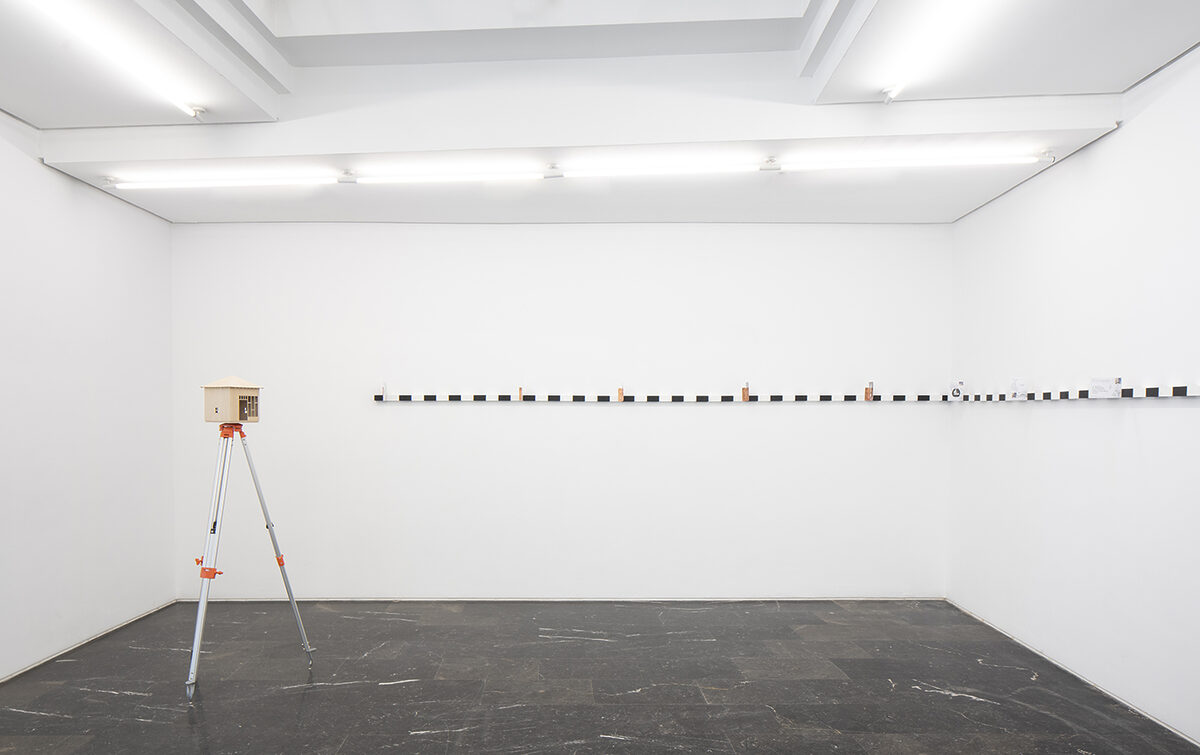
Bohemia (Les Jours et les Nuits), 2020.
Marius Engh. Room 1 General view
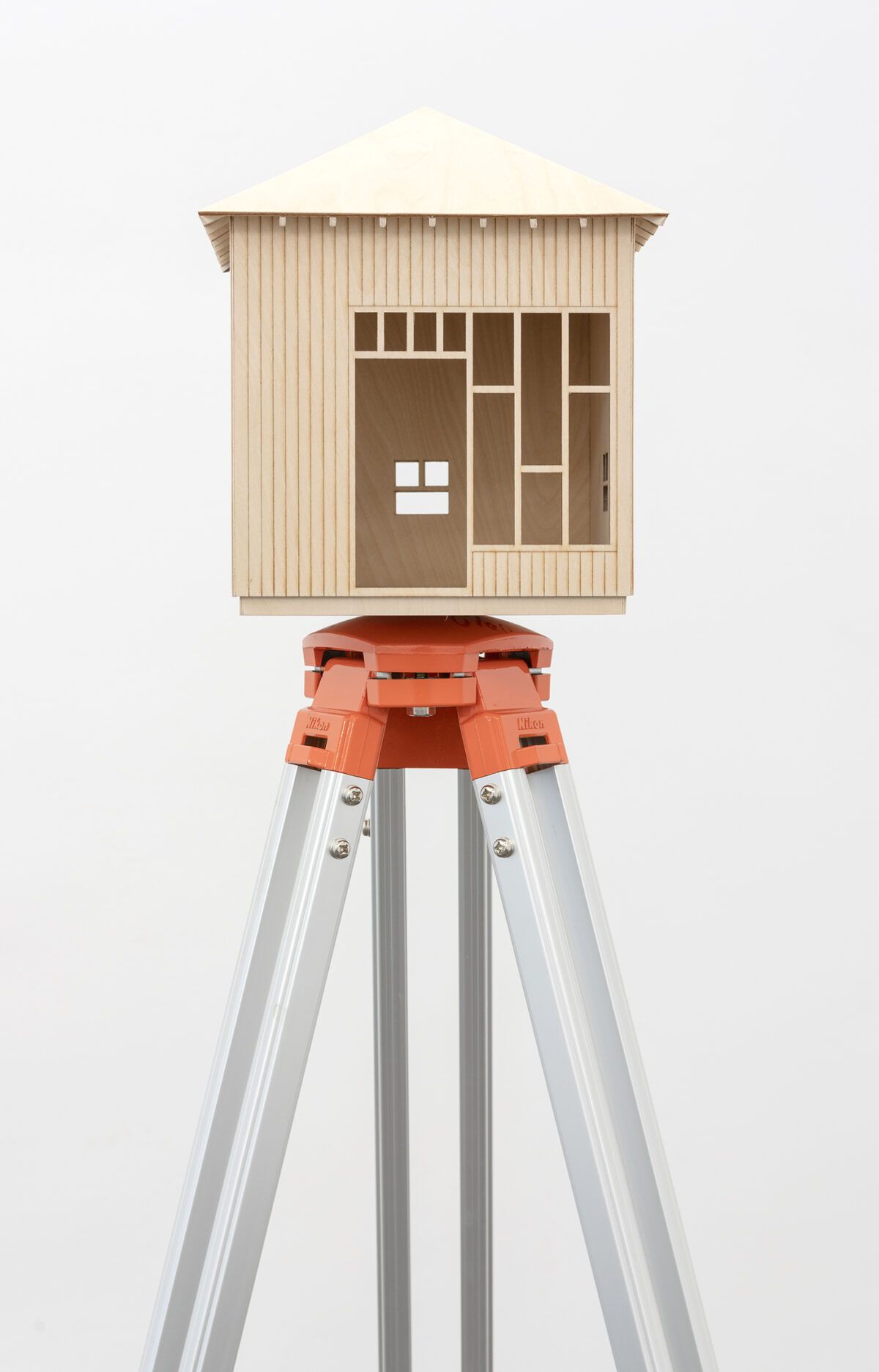
Bohemia (Les Jours et les Nuits), 2020.
Marius Engh. Le Tripode, 2019. Laser cut wood, acrylic paint, topographic tripod. 29 x 23 x 26 cm / 173 x 77 x 57 x 57 cm
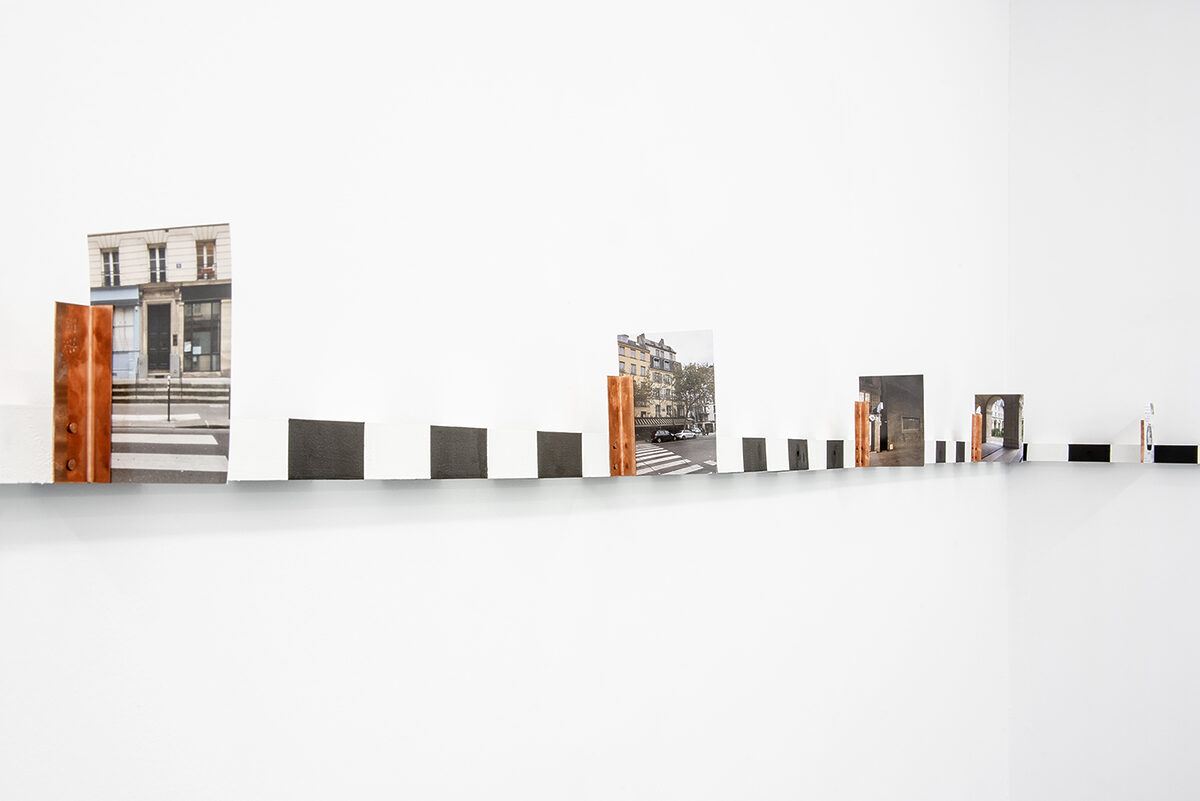
Bohemia (Les Jours et les Nuits), 2020.
Marius Engh. 12 mètres, 2020. 12 postcards of colour photographs on 340 g paper, text and images on the reverse, stamp, copper mounts, wooden beams and painting. Variable dimensions. Site-Specific Installation

Bohemia (Les Jours et les Nuits), 2020.
Marius Engh. 12 mètres (Detail), 2020. 12 postcards of colour photographs on 340 g paper , text and images on the reverse, stamp, copper mounts, wooden beams and paint. Variable sizes. Site-Specific Installation
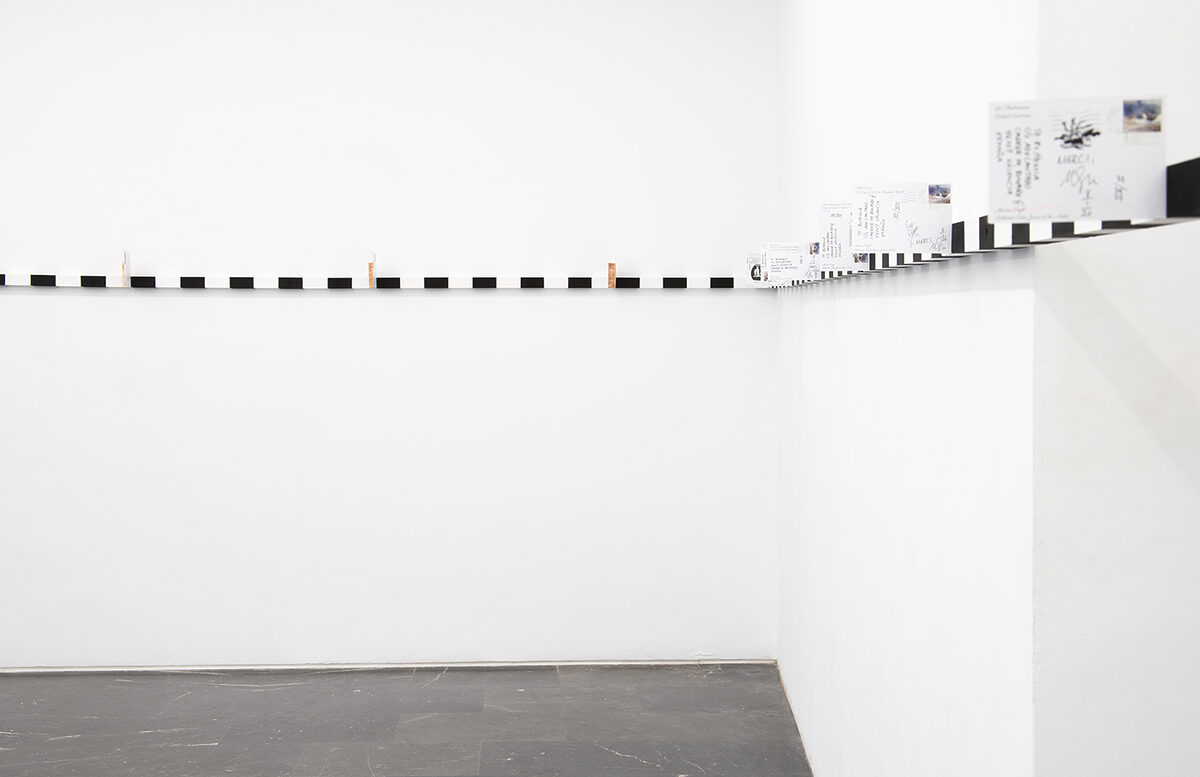
Bohemia (Les Jours et les Nuits), 2020.
Marius Engh. 12 mètres, 2020. 12 postcards of colour photographs on 340 g paper, text and images on the reverse, stamp, copper mounts, wooden beams and painting. Variable dimensions. Site-Specific Installation
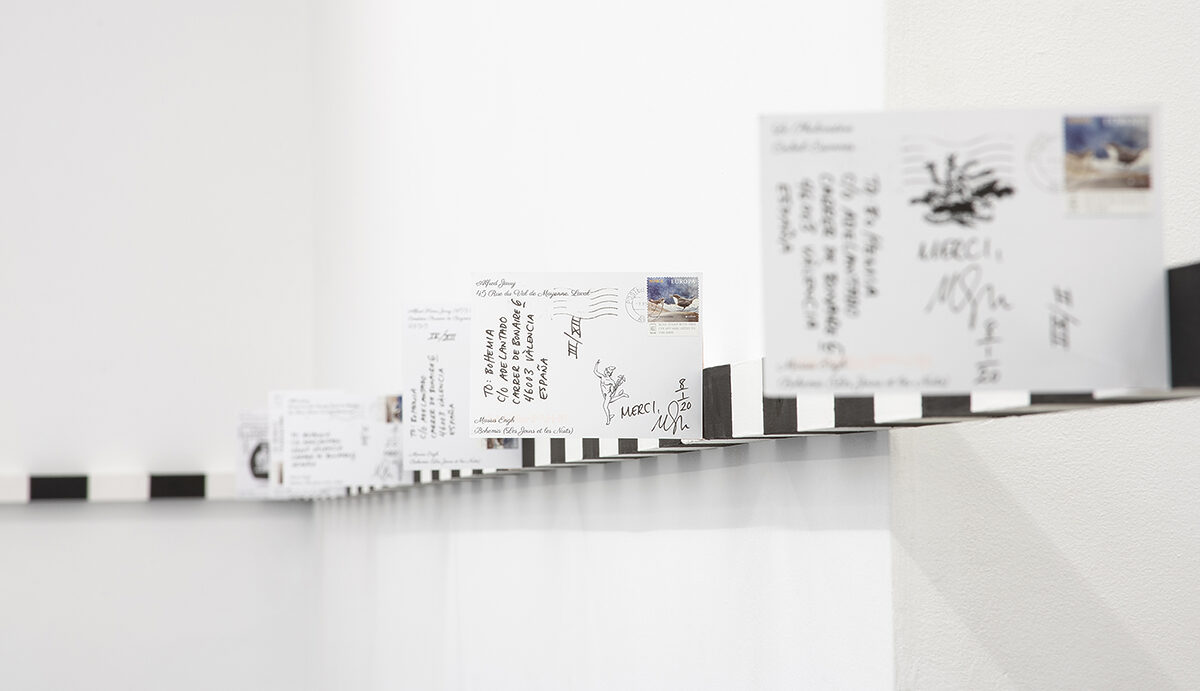
Bohemia (Les Jours et les Nuits), 2020.
Marius Engh. 12 mètres (Detail), 2020. 12 postcards of colour photographs on 340 g paper , text and images on the reverse, stamp, copper mounts, wooden beams and paint. Variable sizes. Site-Specific Installation
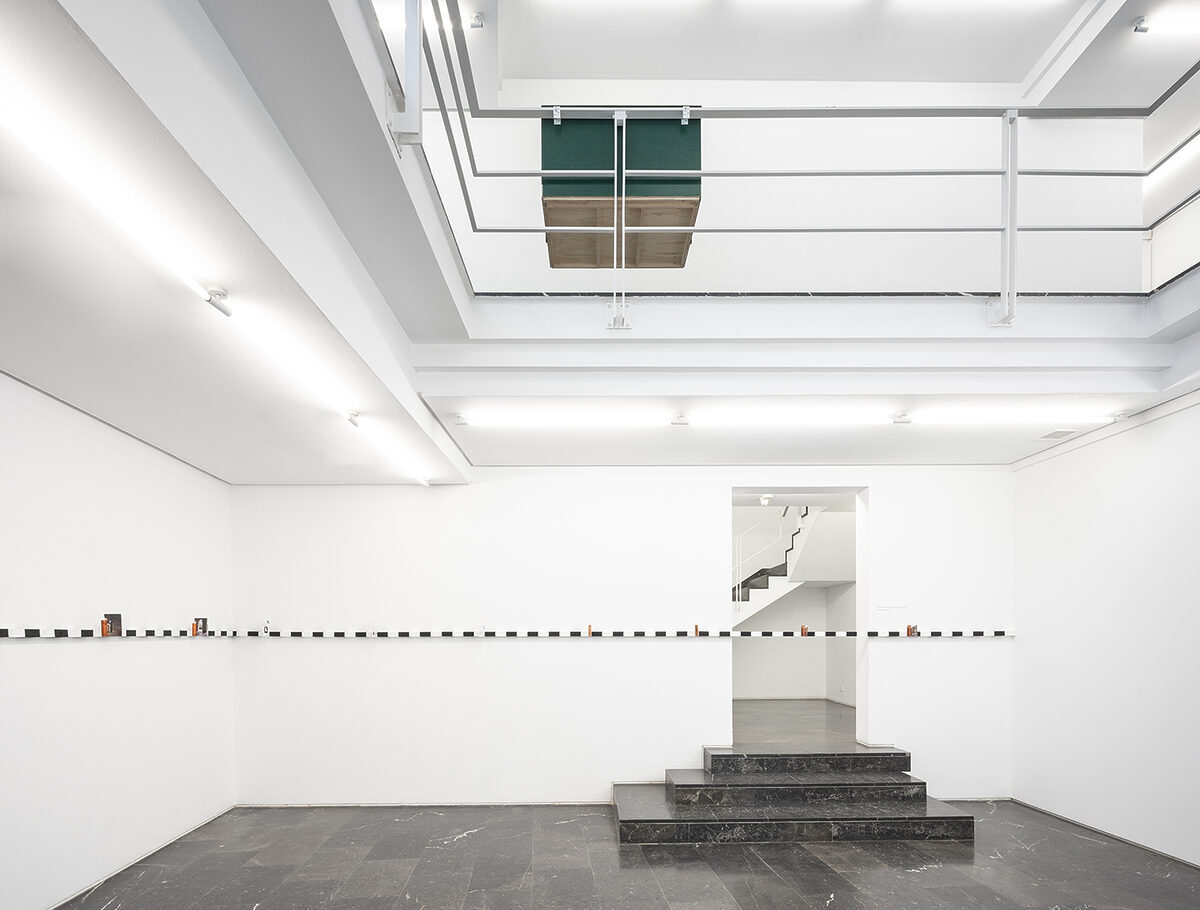
Bohemia (Les Jours et les Nuits), 2020.
Marius Engh. 12 mètres (Detail), 2020. 12 postcards of colour photographs on 340 g paper , text and images on the reverse, stamp, copper mounts, wooden beams and paint. Variable sizes. Site-Specific Installation
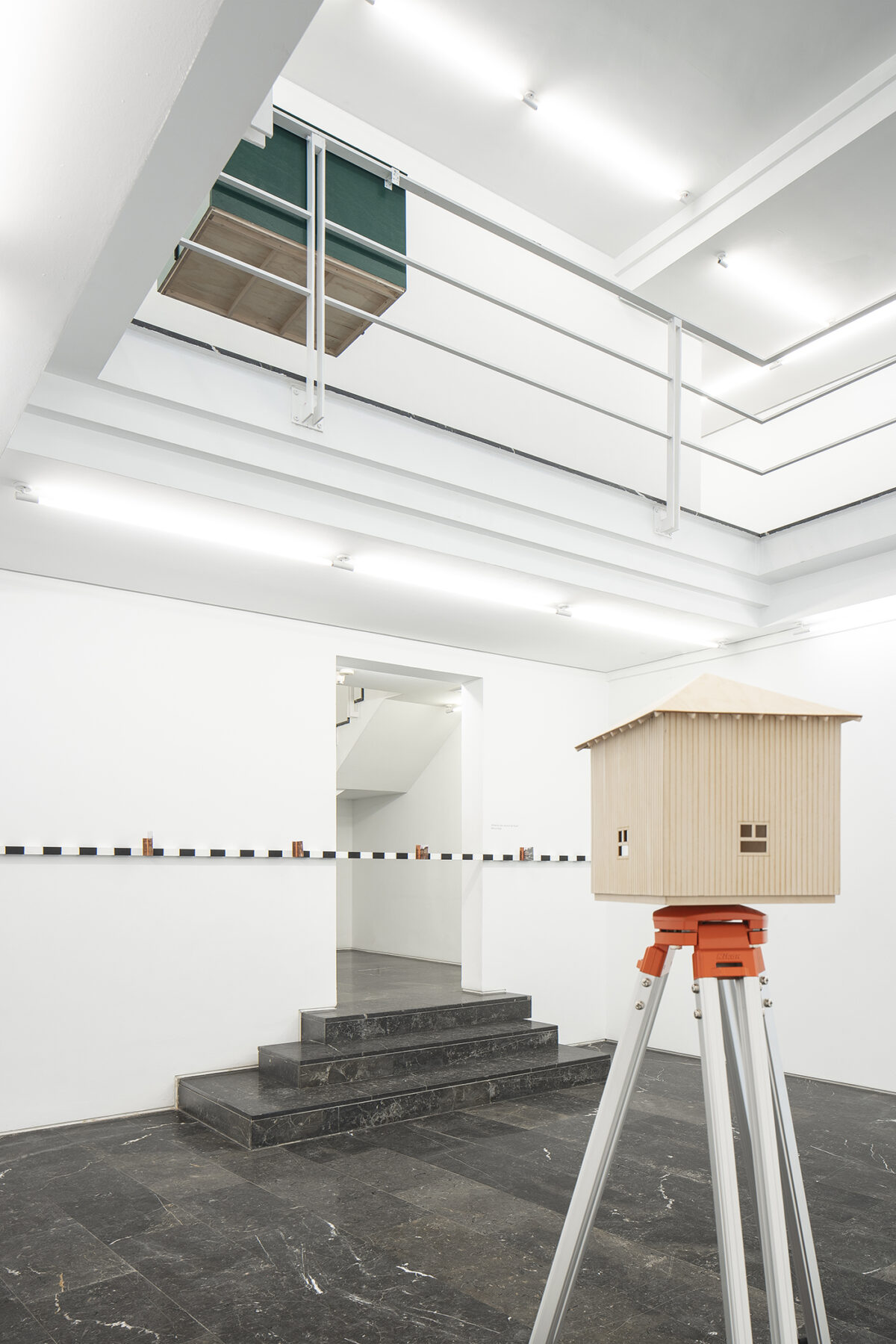
Bohemia (Les Jours et les Nuits), 2020.
Marius Engh. Room 1 General view
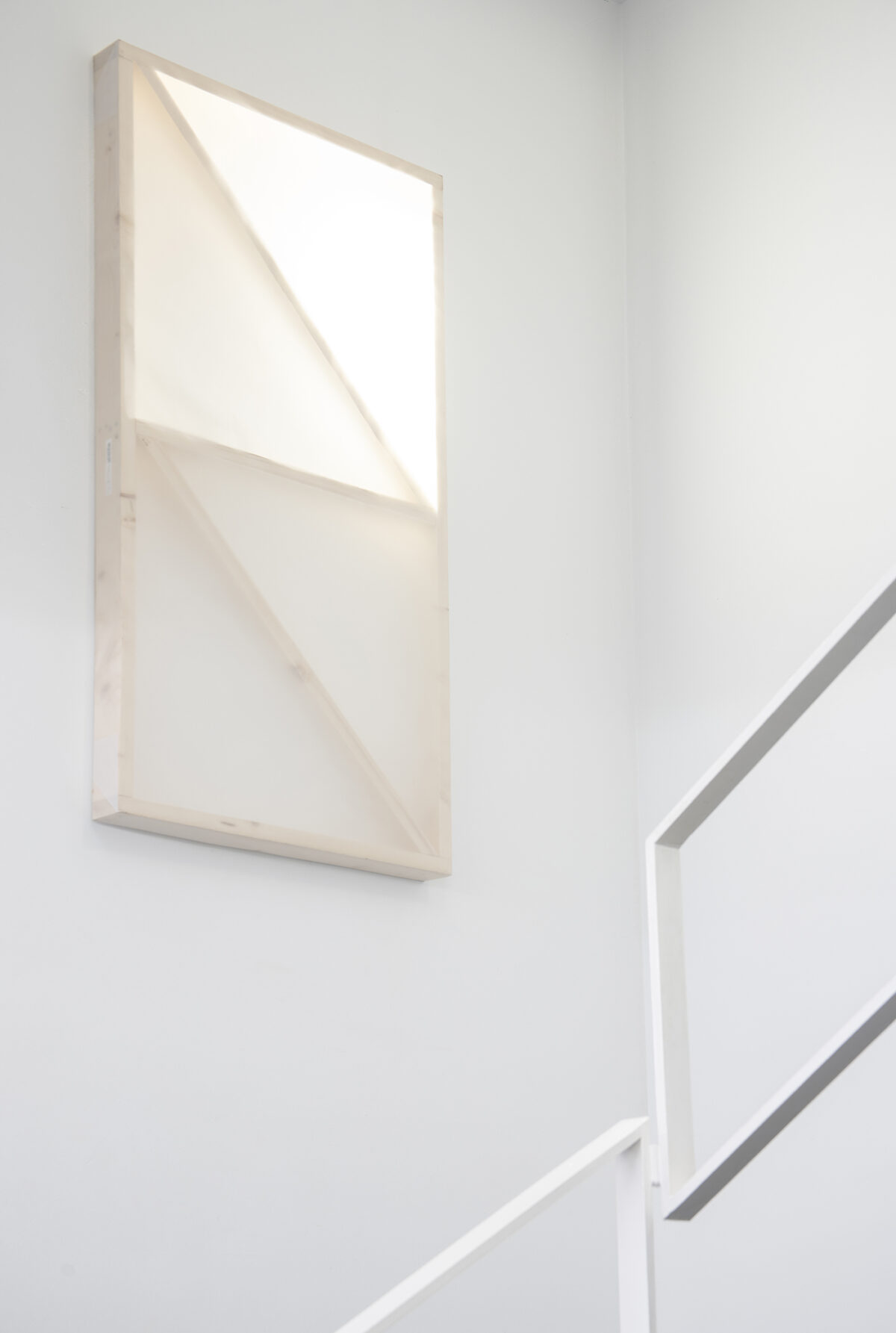
Bohemia (Les Jours et les Nuits), 2020.
Marius Engh. Phalanstère I, 2020. Wood and tracing paper . 125 x 65 x 65 cm
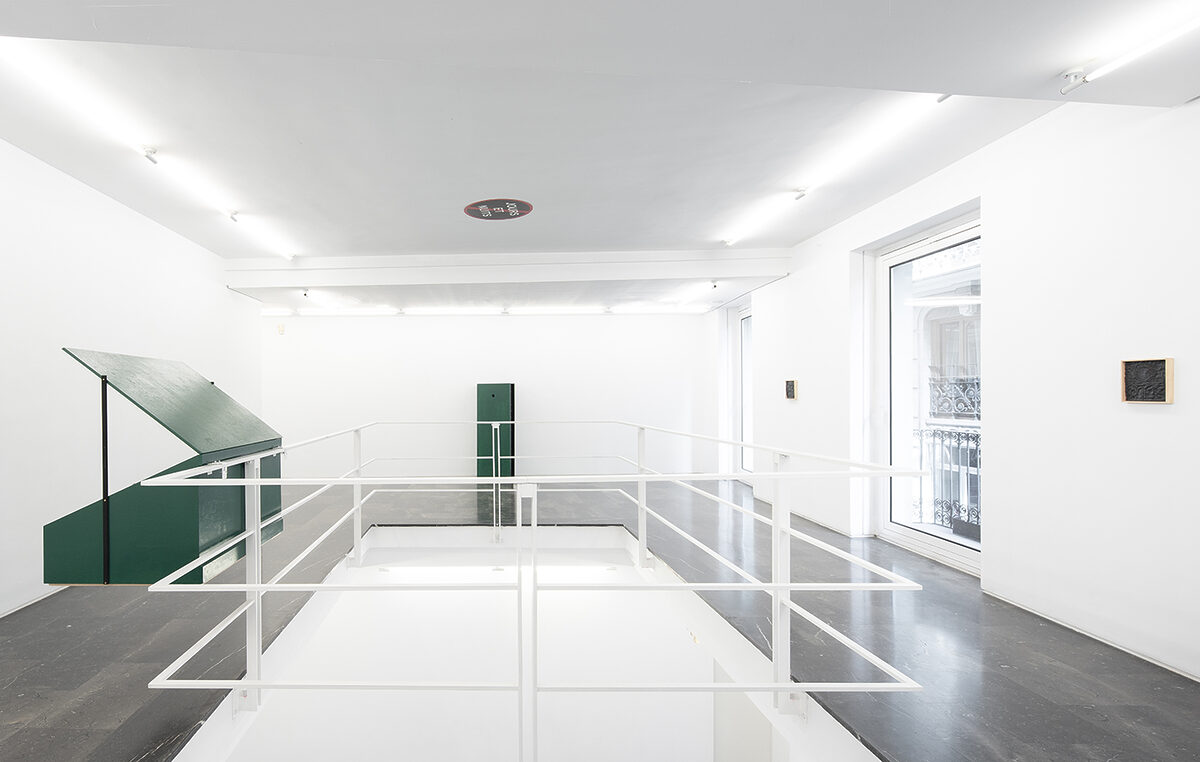
Bohemia (Les Jours et les Nuits), 2020.
Marius Engh. Room 2. General view

Bohemia (Les Jours et les Nuits), 2020.
Marius Engh. Reliquarie (Surmâle), 2020. Foundobjects, bottle rack, plywood, painting, metal hinges , metal hinges . 158 x 59, 5 x 35,5 cm

Bohemia (Les Jours et les Nuits), 2020
Marius Engh. Illustration II, 2019. Clay, wooden frame 22 x 22 x 3 cm
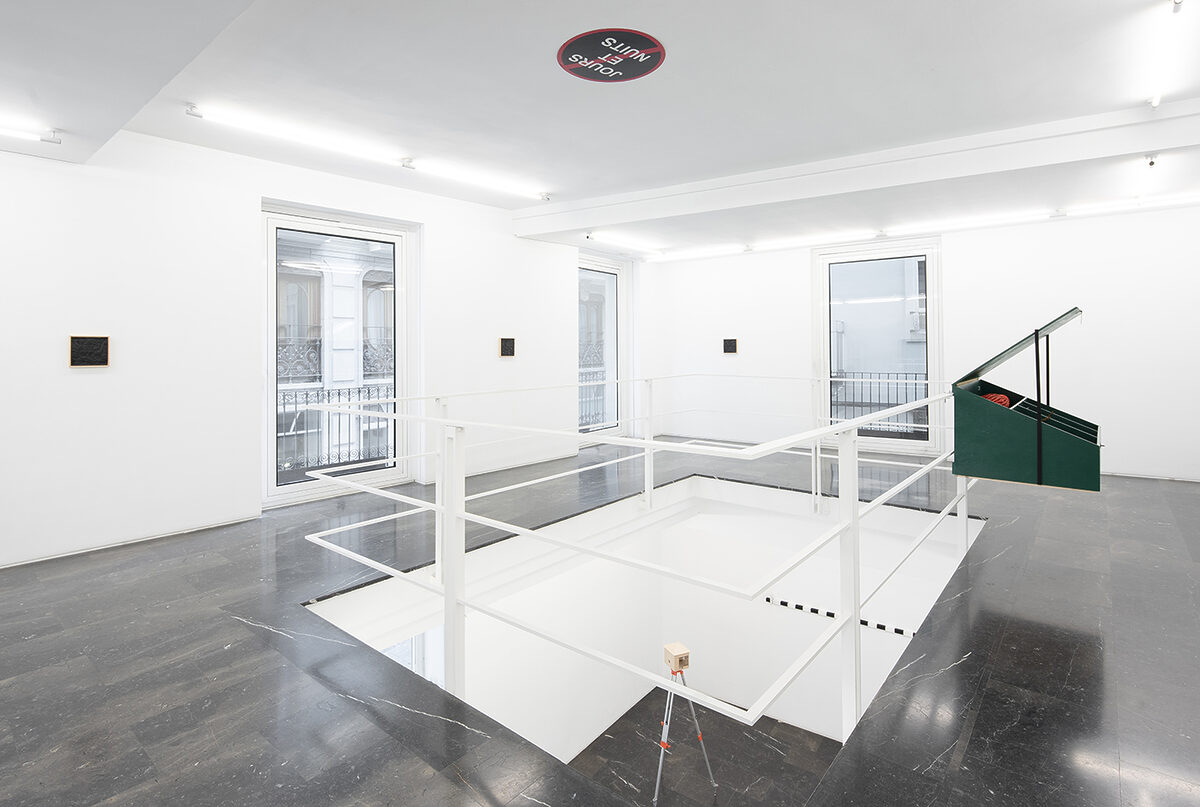
Bohemia (Les Jours et les Nuits), 2020
Room 2. General view
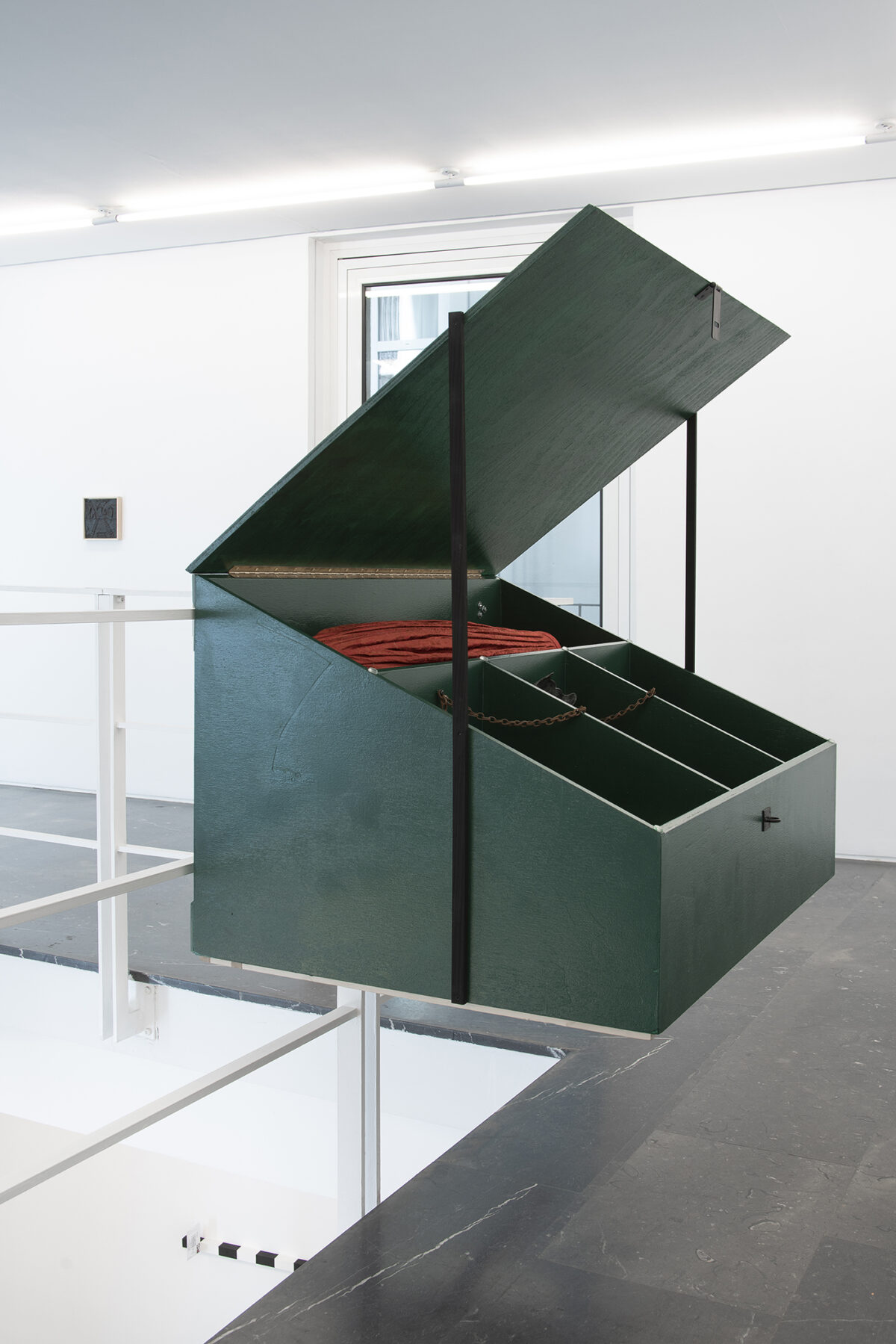
Bohemia (Les Jours et les Nuits), 2020
Marius Engh. Reliquarie (Bouquiniste), 2020. Foundobjects, sheet metal , metal, paint. 104 x 100 x 70 cm (abierta) / 58 x 100 x 70 cm (cerrada)
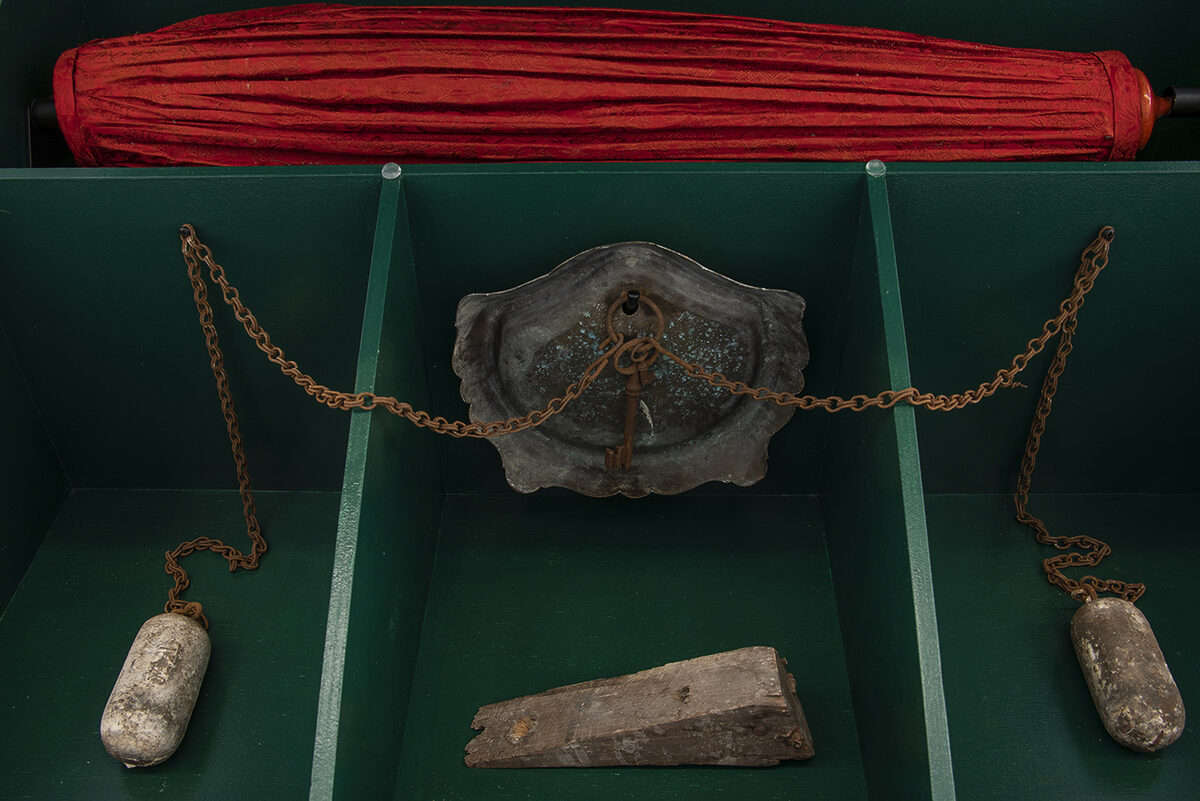
Bohemia (Les Jours et les Nuits), 2020
Marius Engh. Reliquarie (Bouquiniste) (Detail), 2020. Foundobjects, plywood, metal, paint. 104 x 100 x 70 cm (open) / 58 x 100 x 70 cm (closed)

Bohemia (Les Jours et les Nuits), 2020
Marius Engh. Mercure de France, 2020. Sign, digital print, aluminium. 0,2 x 60 cm Ø